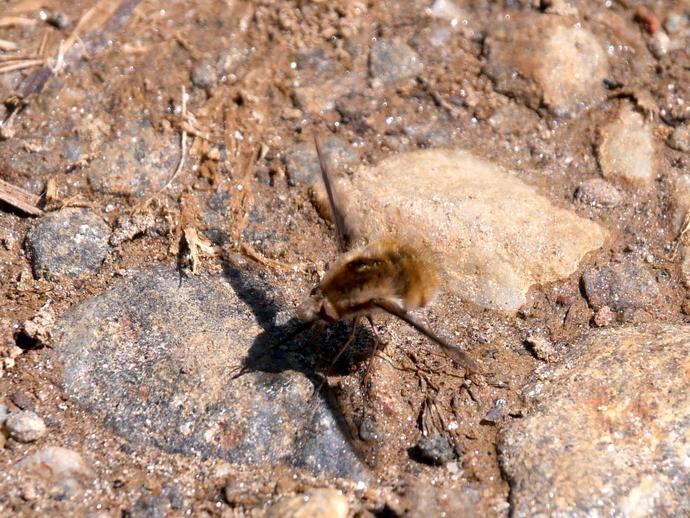April 19, 2020
With its cute fuzzy abdomen, you could easily mistake this fellow for a friendly bumblebee; however, it's all a clever ruse! This is Bombylius major, also known as the large bee fly, and as the name suggests, it's actually a fly in disguise. An easy way to tell that they're flies instead of bees is that they only have one pair of wings as opposed to two. Bee flies don't bite, sting, or spread disease, and they're important generalist pollinators. In addition to being found in North America, this species can also be found in Europe and parts of Asia.
Bee flies have likely evolved to resemble bumblebees for a couple of reasons. First off, their appearance likely deters predators that would enjoy eating a fly but wouldn't mess with a bumblebee. Their mimicry also allows them to get close to the nests of their hosts.
When it comes time to lay its eggs, a bee fly will find the nest of one of several species of solitary wasps and bees; they're particularly fond of solitary digging bees. The female bee fly will hover over the opening to the subterranean nest and then flick her eggs into the tunnel. Only a few eggs will actually make it into the tunnel. When an egg hatches, the bee fly larva will begin eating the larva of the solitary bee or wasp, and it will also eat the food that was stored in the nest. Eventually, the bee fly larva will turn into a pupa to overwinter and then emerge in the spring.
Don't judge the bee fly too harshly, however; it pollinates a wide variety of plants and serves an important function. #BenInNature
About this post: Social distancing can be difficult, but the next few weeks present a great opportunity to become reacquainted with nature. While he is working from home, Administrator of Science Ben Williams is venturing outdoors each day to record a snapshot of the unique sights that can be found in the natural world.
This post brought to you by VMNH Corporate Supporter Bassett Furniture.

 Hours & Admissions
Hours & Admissions Directions
Directions

